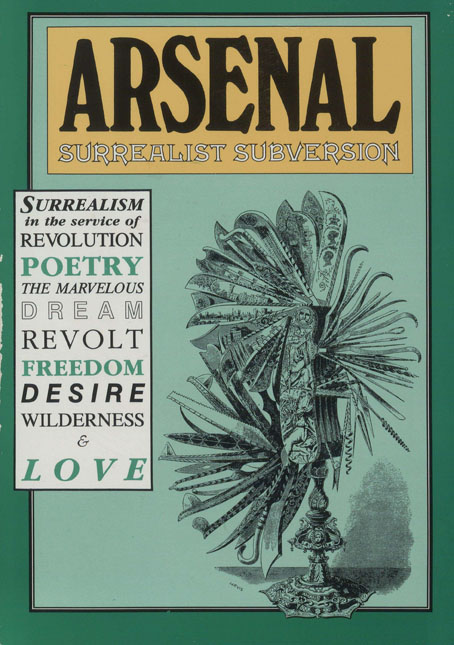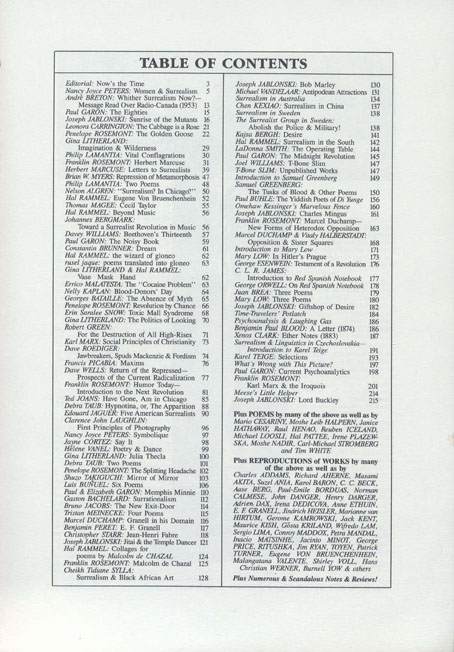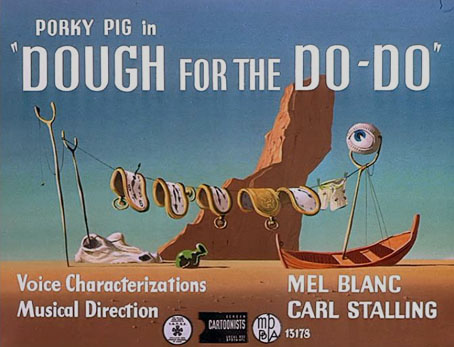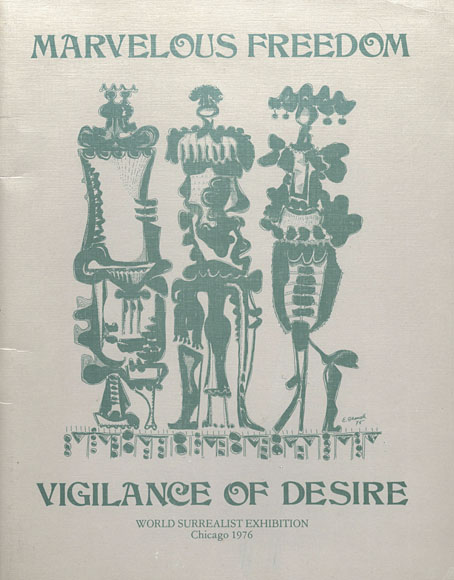
It looks like I’m still in the Synchronicity Zone. This PDF of the fourth and final issue of Arsenal: Surrealist Subversion turned up when I was searching for something that had nothing to do with Surrealism in general or the Chicago Surrealist Group in particular; inside there are yet more wolves and mentions of anarchy, although the two aren’t directly connected this time. The fourth number of Arsenal was published in 1989, thirteen years after the third issue, and at 230 pages is the most substantial number of all. Substantial and easily the best of the four, with a wide range of textual and visual material, and less concern with the aesthetic and political arguments of the distant past. There are some impressive collage pieces in this issue, as well as examples of work by painters that were unknown to me which I’ll be following up later.
The editorial tone is generally less belligerent than the earlier issues although Franklin Rosemont is still lobbing verbal grenades at the cultural figures who managed to upset him. As I said in January, you can’t expect much else from a magazine that names itself after a store of weapons. Elsewhere in the issue the writers attempt to compensate once again for André Breton’s dismissal of music as a vehicle for Surrealism although none of the discussion goes very far. The blues and jazz musicians mentioned are all dead ones, and mostly seem to be celebrated for their “liberatory” existence rather than any overtly Surrealist qualities in their music. The attitude seems to be: This music/person is liberatory; Surrealism is liberatory; therefore this music/person is Surrealist. The only reference to the vast ocean of popular music comes with a one-page eulogy to Bob Marley of all people, the safest choice in any discussion of Jamaican music. Reading this you wouldn’t know there was a whole world of deeply weird and very influential dub music out there. I’d argue that there’s more Surrealism in King Tubby Meets Rockers Uptown or any number of Lee Perry singles than in the whole of the Marley discography. An opportunity was missed in this issue and the earlier numbers of Arsenal to show the ways in which music—especially the popular variety, not compositions for the concert hall—has been continually Surrealist from the rock’n’roll era to the present day. But this discussion is only a small percentage of the whole journal. If it fails here it leaves an opening for more detailed exploration elsewhere.
Elsewhere on { feuilleton }
• The Surrealism archive
Previously on { feuilleton }
• The Werewolf of Anarchy
• Arsenal: Surrealist Subversion






